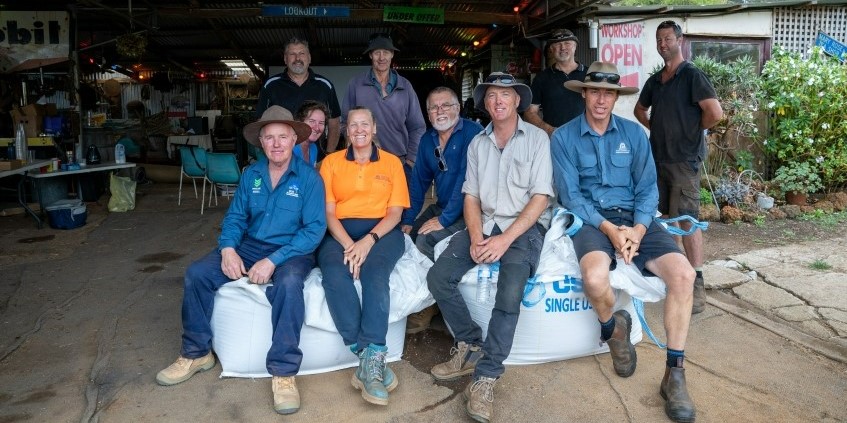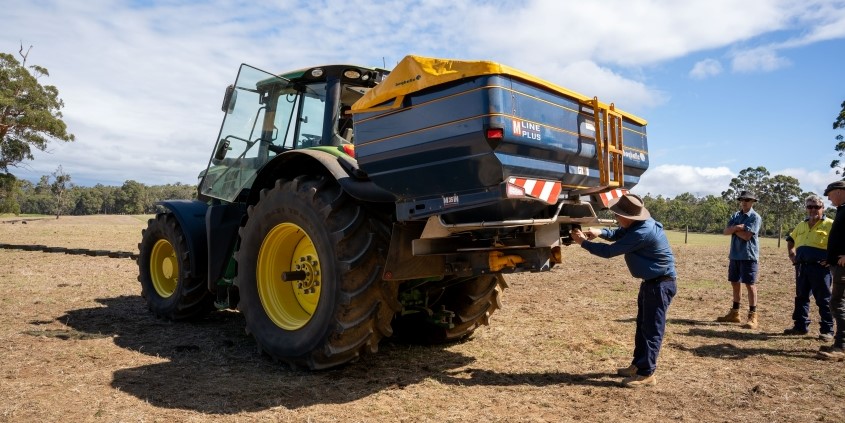
A total of 120 participants took part, some bringing along their own fertiliser spreaders for testing and calibration by Australia’s leading specialist, Russell Nichol. Russell has been testing the performance of spreaders for more than 30 years.
The testing helps farmers select an optimum spread width for different fertiliser products and lime, based on the performance of their spreader. Understanding the spread pattern of a fertiliser spreader when using different products can result in higher productivity and healthier waterways.
“With the high costs of fertiliser, it is especially timely for farmers and contractors to learn how to test and calibrate their fertiliser spreaders to make sure they are applying the right amount of fertiliser in the right places,” said Dr Deborah Holtham, the Sustainable Agriculture Project Coordinator for the Department of Water and Environmental Regulation.
“From the perspective of waterways, and in a drying climate, it is more important than ever to keep excess nutrients from entering our waterways where they can fuel harmful algal growth.”
Accu-Spread® involves the testing of fertiliser spreading equipment for accuracy and evenness of spread. The process identifies whether adjustments, repairs or maintenance are needed to optimise performance.
Bruce Radys from Oyster Harbour Catchment Group hosted two of the demonstration days. Bruce said it was a great opportunity for farmers and contractors to test the performance of their equipment.
“It’s great for the farmers who make improvements to be able to spread at a wider bout width – reducing waste, spreading time and costs or being able to match seeder widths [tramlining],” said Bruce.
“It’s a great outcome because a properly calibrated spreader running at its ideal bout width is not only more efficient, but the fertiliser is more likely to be absorbed by pasture and less likely to end up in our waterways.”
The demonstration days were delivered by Healthy Estuaries WA catchment group partners, the Department of Water and Environmental Regulation and the Department of Primary Industries and Regional Development.
This project is part of the State Government’s Healthy Estuaries WA and Revitalising Geographe Waterways programs. These State Government initiatives aim to support the long-term health of our South West estuaries.
To learn more about best practices for nutrient management, including fertiliser spreading, see our Nutrient best management practices guideline.



